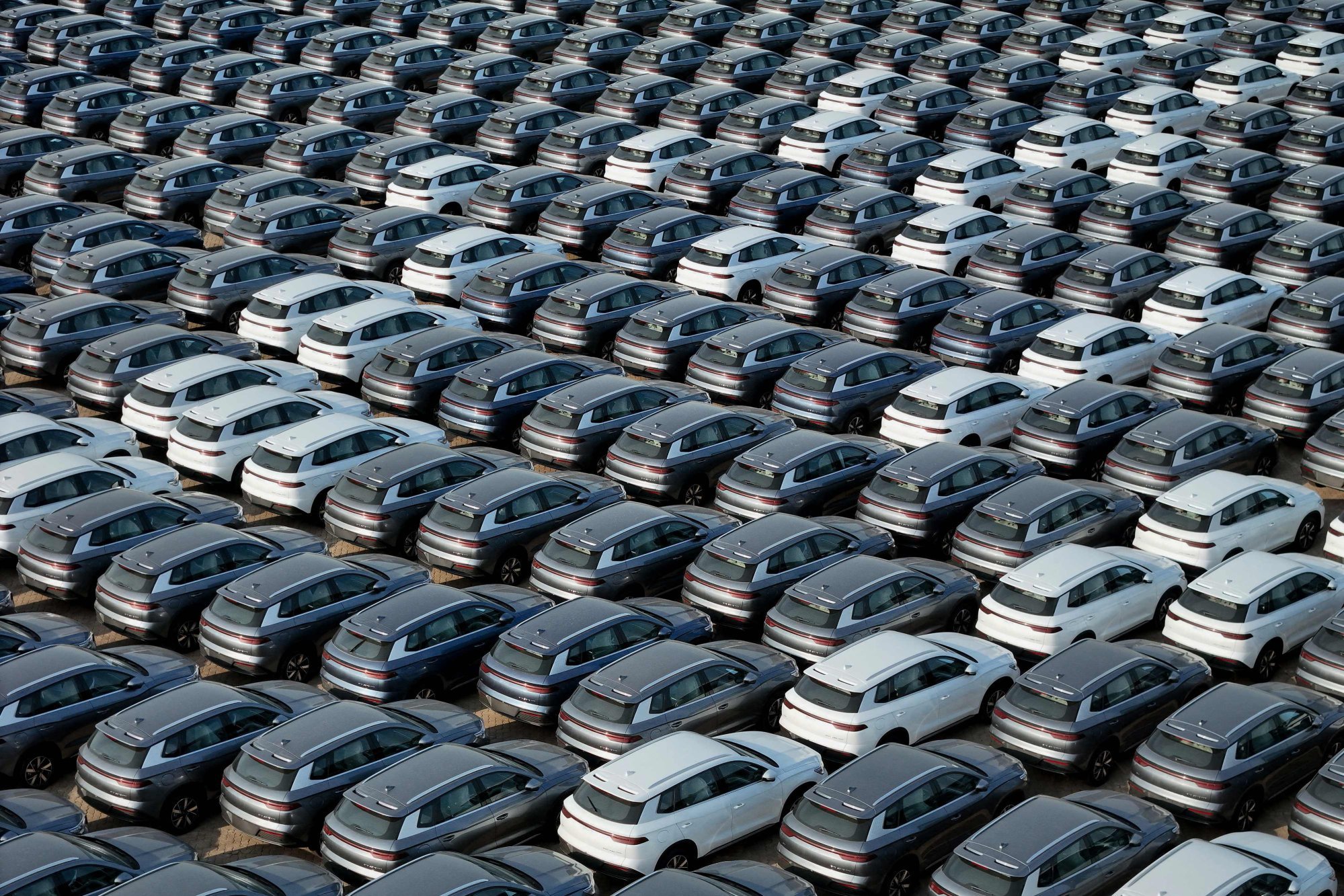China’s car exports are likely to hit a speed bump in 2025 as leading electric vehicle (EV) players absorb additional tariffs from the European Union (EU), the biggest overseas market where mainland-made cars enjoy a healthy profit margin.
But the country’s top automotive firms like state-owned SAIC Motor will diversify their product lines by introducing petrol cars and hybrid models to blunt the impact of the trade barriers.
According to estimates from Hua Chuang Securities, overseas shipments of cars assembled on the mainland could exceed 5.58 million units in 2025, up 14 per cent from a year earlier. That is slower than the projected 29 per cent gain this year and 58 per cent rise in 2023, it said, when China overtook Japan as the world’s largest car exporter.
Do you have questions about the biggest topics and trends from around the world? Get the answers with SCMP Knowledge, our new platform of curated content with explainers, FAQs, analyses and infographics brought to you by our award-winning team.
In the first three quarters of this year, mainland-based carmakers reported a 27 per cent growth in exports, reaching 3.1 million units, according to research firm Canalys.
Alvin Liu, a senior analyst at Canalys, said in a research report last month that the EU tariffs would result in diminished demand for Chinese-made pure electric cars. But the bloc remains an attractive market for Chinese carmakers, who will build more hybrid vehicles to woo European customers.
“Europe remains a core market for Chinese carmakers’ globalisation efforts,” he said. “SAIC Motor is a clear example – it introduced hybrid versions of its MG3 and MG ZS models, aiming to challenge Japanese brands’ position in Europe.”
China’s car exports to the EU represented 28.4 per cent of the total for the first three quarters of 2024, Canalys said.
In October, the EU voted to impose tariffs on pure-electric cars made on the mainland following an anti-subsidy investigation. The new duties are on top of the standard 10 per cent tariff applied to China’s pure-electric cars. The new tariffs will be in force for five years.
Global brands including Volkswagen and BMW are also subject to the tariffs because they assemble some of their vehicles on the mainland with local partners like SAIC Motor and Brilliance Auto.
The tariffs that have been applied on Chinese carmakers range from 17 per cent to 35.3 per cent. Among Chinese auto exports, pure EVs are expected to account for 19 per cent of the total, down from 22.5 per cent a year earlier.
Plug-in hybrid cars would account for more than 10 per cent, according to Canalys.

Gui Shengyue, CEO of Geely Automobile Holdings, the mainland’s second-largest carmaker, told the Post earlier this month that an 18.8 per cent tariff imposed on the company’s pure electric cars wouldn’t stop it from gaining more market share in the EU because its production advantages could be enough to offset the impact.
“Geely’s car exports will maintain an upward momentum in 2025, though the growth pace will turn out to be mild,” he said, adding that the Hangzhou-based company would pursue more overseas shipments for both EVs and petrol models.
William Li, the co-founder and CEO of Shanghai-based EV builder Nio, estimated that China’s car exports would surge to 15 million units annually in the coming few years, aided by carmakers’ cutting-edge battery and smart car technologies.
On top of the 25 million cars to be sold on the mainland, annual output by Chinese carmakers is expected to hit 40 million units in the next few years. In the future, four out of every 10 cars worldwide will be built by Chinese companies, Li said.
Last year, UBS predicted that Chinese-made cars, benefiting from a faster pace of electrification, would control 33 per cent of the global market by 2030, up from 17 per cent in 2023.
“Chinese carmakers still need to study how to make our intelligent vehicles cater to local customers’ demands,” Nio’s Li said. “The costs of building infrastructure should not be underestimated and there are some other big difficulties for us to overcome.”
A brutal price war and overcapacity woes at home have prompted Chinese EV makers to expand abroad.
The China Association of Automobile Manufacturers expects mainland EV deliveries to exceed 11 million units this year, accounting for about 55 per cent of the country’s total production capacity of 20.2 million units – nearly unchanged from a year earlier.
Chery Holding Group, a state-owned carmaker based in eastern Anhui province, exported 941,275 vehicles in the first 10 months of 2024, up 23.8 per cent from a year earlier. It is the top Chinese carmaker in terms of export volume and most of its cars shipped abroad are powered by internal combustion engines.
More from South China Morning Post:
- China’s demand for intelligent cars to create a US$356 billion components industry by 2030
- CATL to build 1,000 EV battery swap stations in China to ease range anxiety
- China’s CATL to build US$4.3 billion EV battery plant in Spain with Fiat owner Stellantis
- Chinese electric truck makers accelerate global dominance even as they face trade hurdles
- Embattled Chinese EV maker Hozon eyes exports to survive brutal domestic price war
For the latest news from the South China Morning Post download our mobile app. Copyright 2024.





